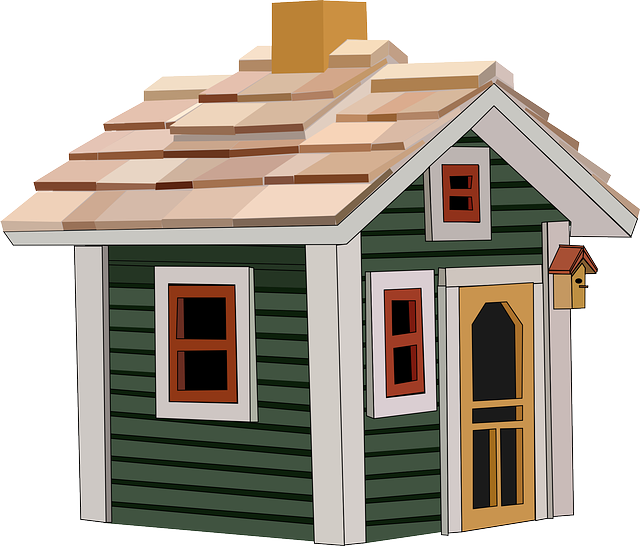Home surveillance has evolved from static cameras to dynamic real-time monitoring systems, offering instant video feeds and alerts via smartphones. This technology enhances peace of mind by enabling remote observation, detection of unusual behavior, and two-way audio communication. A comprehensive system includes high-quality cameras, motion sensors, smart door locks, and a central control panel, with real-time alerts via smartphone apps. Initial setup involves needs assessment, camera placement, and Wi-Fi connection, followed by regular updates. Future trends include AI-powered systems, improved camera technology, voice control, and integration of IoT and 5G for comprehensive security networks.
In today’s digital era, real-time monitoring has emerged as an indispensable tool for enhanced home safety. Understanding the basics of home surveillance involves grasping how real-time data and alerts can transform your living space into a secure environment. This article delves into the benefits, key components, setup processes, and future trends of home surveillance systems, empowering folks to navigate and safeguard their homes effectively using cutting-edge technology.
- Understanding Home Surveillance: The Basics of Real-Time Monitoring
- Benefits of Real-Time Monitoring for Home Safety
- Components of a Comprehensive Home Surveillance System
- Implementing and Setting Up Your Home Surveillance System
- Future Trends in Home Surveillance Technology
Understanding Home Surveillance: The Basics of Real-Time Monitoring

Home surveillance has evolved from static cameras to a robust system that offers real-time monitoring, significantly enhancing home safety. At its core, real-time monitoring involves capturing and transmitting video feeds instantly, allowing homeowners or security personnel to observe and respond to any activity in their homes within seconds. This technology is particularly valuable as it provides continuous observation, deterring potential intruders and enabling swift action when alarms are triggered.
Unlike traditional surveillance systems that offer only recorded footage, real-time monitoring offers immediate insights. Homeowners can receive alerts on their smartphones or other devices, allowing them to remotely monitor their homes, check for unusual activity, or even speak with visitors through two-way audio features. This proactive approach to home safety ensures peace of mind and empowers individuals to take control of their personal spaces in an increasingly uncertain world.
Benefits of Real-Time Monitoring for Home Safety

Real-time monitoring offers unprecedented advantages for enhancing home safety. Unlike traditional security systems that rely on recorded footage, real-time surveillance provides immediate alerts and insights into your home’s activities. This capability allows homeowners to swiftly respond to potential threats, such as unauthorized entries or suspicious movements, significantly reducing the risk of property damage or personal harm.
Moreover, integrating real-time monitoring solutions enhances peace of mind by providing constant visibility into your home’s environment. With live video feeds and instant notifications, you can remotely monitor activities, ensuring that everything remains secure even when you’re away. This level of home surveillance empowers you to make informed decisions, quickly address issues, and take proactive steps to safeguard your loved ones and valuables.
Components of a Comprehensive Home Surveillance System

A comprehensive home surveillance system is an intricate network of interconnected components designed to provide robust security and peace of mind. At its core, this system includes high-quality cameras strategically placed both indoors and outdoors to cover all entry points and activity areas. These cameras should offer clear, vivid images, night vision capabilities, and wide-angle lenses for maximum visibility. Motion sensors play a vital role, triggering alerts when any movement is detected, ensuring quick response times.
Advanced technology also involves the integration of smart door locks that can be remotely managed and monitored, allowing homeowners to grant or revoke access as needed. A central control panel acts as the brain of the system, collecting data from all sensors and cameras and providing a user-friendly interface for monitoring and controlling security settings. Additionally, real-time alerts delivered via smartphone apps enable homeowners to stay connected and promptly respond to any potential threats.
Implementing and Setting Up Your Home Surveillance System

Implementing a home surveillance system is an essential step toward enhancing your family’s safety and peace of mind. The first step is to assess your needs. Consider factors such as the size of your property, number of entry points, and specific areas that require close monitoring. Choose a system that aligns with these requirements—whether it’s wireless cameras for easy installation or a hardwired system for robust performance.
Once you’ve selected an appropriate system, setting it up is relatively straightforward. Most modern home surveillance systems come with intuitive apps that guide you through the process. Mount cameras strategically, ensuring clear lines of sight and adequate coverage. Test each camera to verify signal strength and image quality. Link all components—cameras, motion sensors, and a central control unit—to your Wi-Fi network for real-time monitoring via your smartphone or computer. Regular updates and adjustments will ensure your system remains effective and responsive to changing conditions.
Future Trends in Home Surveillance Technology

The future of home surveillance is set to be even smarter and more connected. Emerging trends indicate a move towards integrated, AI-driven systems that can learn patterns and anticipate potential issues. Cameras will likely become more advanced, with improved resolution, night vision, and motion detection capabilities. Expect to see seamless integration with smart home devices, allowing for voice-controlled monitoring and automated responses to alerts.
IoT (Internet of Things) advancements will play a pivotal role, connecting various devices within the home ecosystem. This means your surveillance system could interact with smart locks, lights, and even appliances to create comprehensive security networks. With 5G technology on the horizon, data transfer rates will increase, enabling faster response times for real-time monitoring and recording, further enhancing overall home safety.
Real-time monitoring has revolutionized home safety, offering unprecedented peace of mind. By integrating advanced technology into a comprehensive surveillance system, homeowners can actively monitor their properties, deter potential intruders, and respond swiftly to any threats. As we look ahead, future trends in home surveillance promise even greater efficiency and accessibility, ensuring our homes remain secure in an ever-changing world. Embracing these innovations is key to staying ahead of potential risks and safeguarding what matters most.
